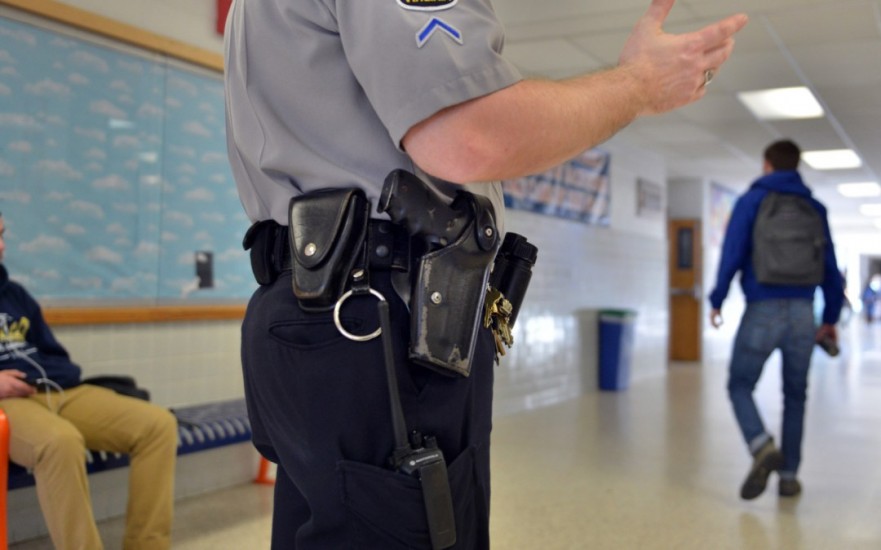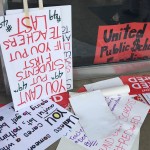School safety has been on the forefront of all of our minds. Without our schools being safe places, students simply cannot learn. There have been a bevy of ideas, some more grounded in reality than others, about how to make sure schools are safe places. From my point of view, the SRO at my school has been extremely important in providing services to students. Our high school has a full-time school resource officer. The middle school at my district has a full-time SRO. Both of them will go out to the elementary schools and charter schools in town as necessary.
I’ll be honest. I was a civics teacher for years and my only interaction with our school resource officer was when he would come and present about the 4th amendment and New Jersey v. TLO to my students each year. He was also the DARE officer at my child’s elementary school, but other than that, I had no idea what the SRO in my school did.
And then, I became an administrator; I realized that the SRO who served my school wore a lot of different hats. He knew all of the kids. He was out there building relationships. He knew their siblings and their parents. He dealt with dangerous situations and assisted with assaults, harassment, and drug issues. He helped handle truancy and worked with families to get kids to school. He helped find bikes for kids, so they could get to school. He attended court proceedings for kids who were in the juvenile justice system. He provided support for new drivers who had accidents in the parking lot. He helped kids who were being bullied, and he even helped kids who were bullies. He answered questions for parents who had kids that ran away or were incorrigible. He helped staff understand what mandatory reporting really meant. He investigated abuse cases that were happening to the kids that came to school every day. He counseled families that were in crisis and didn’t give up on kids who were pushing boundaries. He was a positive role model for many students who were lacking role models. The list of his formal and informal duties goes on. He has had the ability to support laws and safety in our school, but his ability to support kids’ well being and growth far extends the badge he wears.
So that all sounds wonderful. But here is the problem. The patchwork of how School Resource Officers are employed, partnered with schools, and serve vary from district to district and in districts that serve multiple cities, SROs may be present in some schools, but not others. According to the National Association of School Resource Officers, there is no real known number of SROs (or in some cases Juvenile Probation Officers, which are also used in schools). The NASRO estimates that there are about 29,500 schools that have SROs, but this number is an absolute estimate as many SROs serve multiple schools. The last time any research was actually done was 2007, and the number then was 17,000.
There is also a patchwork of training. Arizona’s School Safety Guidance Manual states this,
“The School Safety Program (SSP) was established by ARS 15-154 in 1994 for the purpose of placing School Resource Officers (SRO) and Juvenile Probation Officers (JPO) on school grounds to contribute to safe school environments that are conducive to teaching and learning. Through comprehensive prevention and intervention approaches, School Safety Program funded officers maintain a visible presence on campus; deter delinquent and violent behaviors; serve as an available resource to the school community; and provide students and staff with Law-Related Education (LRE) instruction and training. Officers develop positive interactive relationships with the students, the staff, and the community that they serve. This proactive, prevention-based program is cultivated through collaborative working partnerships between officers, school administration, teachers, and police and juvenile probation departments.”
Officers who work in districts who pay for SROs or JPOs through Arizona Department of Education School Safety Grants must attend training provided by Arizona Foundation for Legal Services and Education. One of the key points of SROs funded through a school safety grant is they must provide 180 hours of Law Related Education to students annually. There is no requirement that SROs must participate in any of this if a community or district does not pay for SRO services through the ADE School Safety Grant. In fact, our city pays for our SROs out of city funding, and my district doesn’t participate in the AZ School Safety Grant. From a nationwide viewpoint, only 12 states require an SRO in a school have some sort of specific training to work with a young person in a school (Atlantic, 2015).
As I researched for this blog, I saw that in Phoenix students were speaking out in opposition of having police presence on their campus. They saw this as detrimental to their safety and the police officer actually strengthened the school to prison pipeline (Phoenix New Times, 2018). From my point of view, the person on my campus who is most focused on restorative practices is our SRO. We are lucky enough to have a teen court system that is focused on students who get into trouble for truancy, drug issues, and other offenses. This teen court system is staffed with community leaders, counselors, a probation officer, a judge, and our SRO. The goal is improving grades, improving choices, providing supports to kids and families, and finding a better way.
I see our SRO program as being effective because of the strong relationship we have with our city. My school district has worked very closely with the police department throughout the years. They have helped us develop school safety protocols. We have let the police department use our gym for training purposes. Our district recognized that there was a shortage of police officers in the community and developed a Career and Technical Education Justice Studies Pathway. We know that as a community, schools and city services like law enforcement are pillars in our community. We are constantly working together to make our community a better place for our youth.
As the debate over school safety continues to rage, I will advocate for SROs at schools who care about kids, teachers, and families.
Afterthoughts:
In the days after I finished this blog and set it aside, students at my school received a threat from a fellow student. There was a police investigation that ended up with the student making the threat being arrested. I watched misinformation spread as the police were in the middle of an investigation. The following day, many parents chose to keep kids home. Multiple police officers were stationed at our campus along with our SRO. I cannot imagine what this school day would look like without our SRO present. He worked as a liaison with the rest of the police department and supported staff and families as kids were continuously picked up by parents. While we plan for difficult days, these days always play out differently than we imagine. It is important that we have trained police to help us with tactical matters, responses to the community, and continued investigations.
Work Cited:










Comments 4
I remember years ago when my school had an SRO officer. I used to invite her to my room every year around the time we would do a unit around Office Buckle and Gloria (Great Story). One of the first questions she would ask was their experience or ideas about a cop. They would always go straight to answers that show cops punishing people or their families. She would then work tirelessly to build relationships with our kids so they can see police officers as their to help. It was a sad day when our budget got cut and she was no longer able to be at our school.
Hi Jamie,
Thank you for advocating for SROs. We lost our SRO this year to due to funding, and I believe it has had a negative effect on our school. As you mention, our SRO wore many hats. He played a vital role in not only our safety but served as a role model and often times father figure to our students. As a teacher in our political climate right now, I would much rather see trained officers help keep us safe than many of the other alternatives that have been suggested.
I 100% agree. Having an SRO is not only about safety, but about building a community for kids.
I love this blog article, and I honestly didn’t understand the true value of the role of SROs!!! My son’s SRO is a tiny 4-foot female senior citizen, but as my son likes to say, “She will take you down!” Ha!